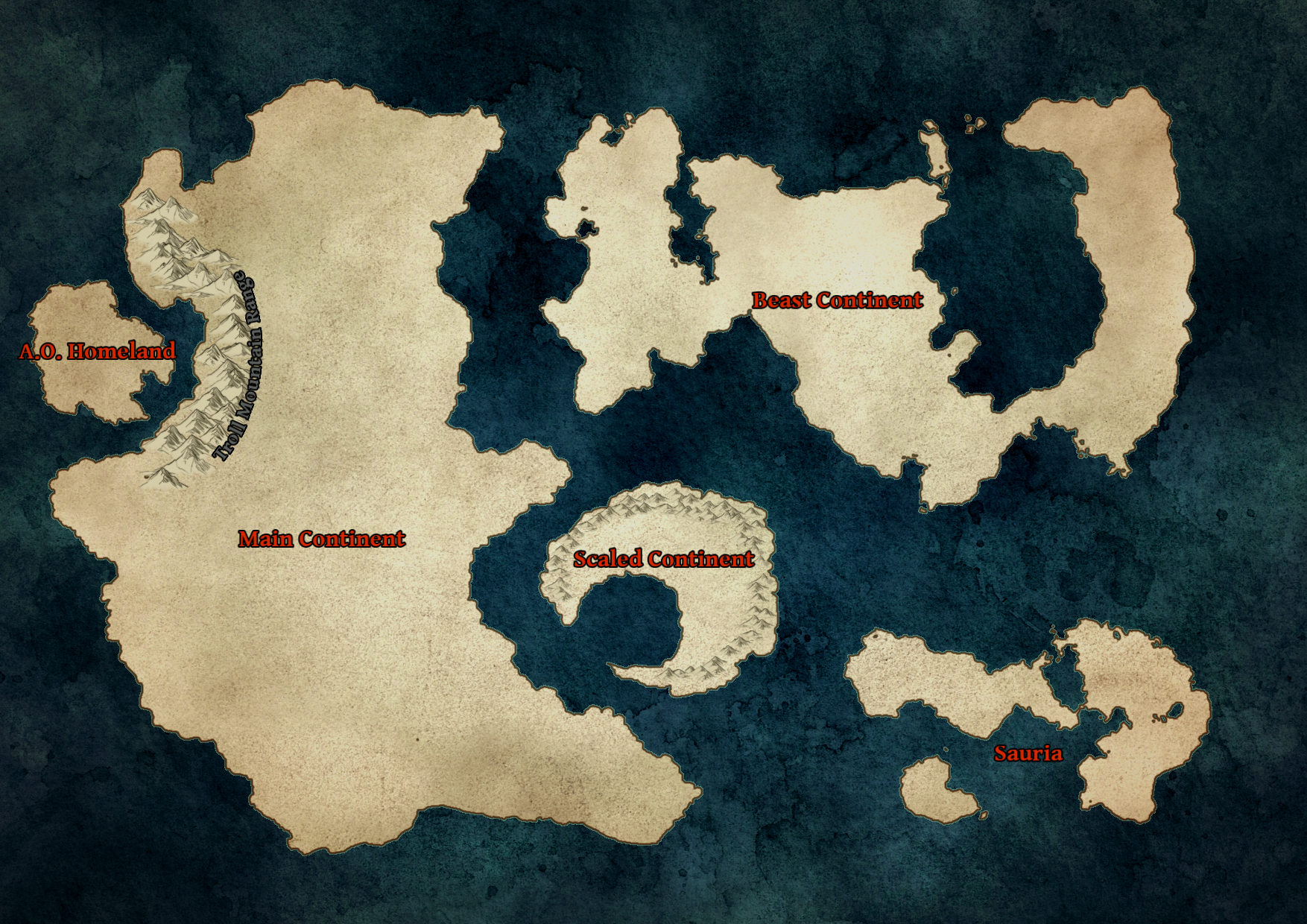Island Sea Turtle
Also known as Aspidochelone.
Basic Information
Anatomy
These sea turtles can grow to massive sizes, with older individuals often being mistaken for islands. Their shells are covered in symbiotic plants.
Biological Traits
Island Sea Turtles are capable for living many hundreds, if not thousands of years.
They tend to be constantly swimming.
Island sea turtles are often followed by schools of various fish species, which use it for either protection, or feed off of dead skin or leftover bits of jellyfish. Some species are found no where else.
Genetics and Reproduction
Surprisingly little is known about the reproduction of Island Sea Turtles. No nesting beach for them has ever been found, and no individual smaller than a man has ever been seen.
Ecology and Habitats
Island Sea Turtles are native to warm waters around the would. Some individuals may migrate towards the poles during the warmer seasons.
Dietary Needs and Habits
While these turtles often feast on massive jellyfish, a lot of their energy comes from the symbiotic plants that grows on their back. These plants absorb a lot of energy from the sun and share it with their host. As a result the turtle spends most of it's time floating at the water's surface, so it doesn't drown it's plants. This means a lot of particulate matter accumulates on it's shell.
Additional Information
Uses, Products & Exploitation
Some individuals have made the backs of these turtles their home, due to the relative safety and isolation, however this can be disastrous on the rare occasions that the turtle dives or is a female that is breeding.
A few nomadic groups of Merfolk follow Island Sea Turtles around for the relative safety out on the open ocean and the abundance of fish that also follow the sea turtle.
Geographic Origin and Distribution
This species is found in oceans world wide.
Symbiotic and Parasitic organisms
Several species of parasitic plants are found on island sea turtles shells and no where else in the world.
Remove these ads. Join the Worldbuilders Guild



Comments